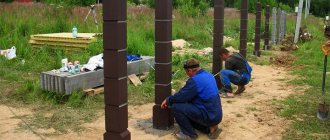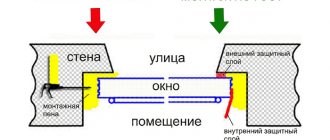Do you want your vegetable garden to become your pride? Read our article on how to do this
How to design beautiful beds for the lazy, tall and smart beds - this is what a gardener needs to know who wants to make his life as independent as possible from gardening worries. If you wish, you just need to master the method of designing lazy beds, which you can see in the following photos. A garden bed of this type will allow you to enjoy a well-deserved rest at the dacha and will not require weeding every time. In addition, it is not only convenient, but also increases crop productivity.
The easiest way to build smart beds is on a flat surface
Seedlings in a high bed always receive enough sunlight
Today there is a strong trend towards switching to healthy organic food. Classic organic farming is not very effective and is burdened with the risk of not getting a harvest at all. But smart beds are a great help in this task
Everyone knows how much time and effort needs to be devoted to each planted crop, which, however, sometimes does not even justify the result: the seedlings may not germinate or do not ultimately produce a normal amount of harvest. In this case, you should pay attention to the technology of lazy beds on your site!
Multi-level narrow beds and paths sprinkled with pebbles
Small beds you can make yourself with a minimum of tools
Different goals - different gardens
What the garden will look like on your summer cottage depends primarily on the goal.
If you need some fresh vegetables for a salad and a few bunches of aromatic herbs for kebabs, that’s one thing. A modest vegetable garden with a couple of beds will not require any effort or time, and there is a place for it even in the smallest area. The main thing is to have a lot of sun!
If you are not a big fan of eating vegetables and just want to decorate your dacha, your choice is a decorative vegetable garden. To begin with, it may be small in area, because it needs to be well looked after. Because the main task of any ornamental garden is to please the eye, and not to produce a harvest.
If the goal is to provide your family with vegetables for a year, then this is a serious matter. This is a classic vegetable garden of several hundred square meters with beds, greenhouses and a full shed of tools.
You will have to work hard, invest money, waste time: vegetables need regular and timely care. But when you taste your own vegetables and compare them with store-bought ones - yes, it was worth the blisters on your palms!
Layout
First, you should think over a plan for your garden and draw it (on paper or on the computer).
Here it is important to take into account the location of the site: lighting, topography, soil type, etc. This will affect the choice of location for the beds and where to plant the plants.
For a vegetable garden, a separate place can be allocated on the site, for example, 2-3 acres. Then it needs to be zoned and boundaries defined. In this case, caring for the plantings will be a little easier, because they are all concentrated in one place.
It is possible to distribute the beds throughout the site. Then the choice of conditions for growing plants will be greater: we plant sun-loving plants in a place with the optimal amount of sunlight, and shade-tolerant plants in shaded areas.
Wrong arithmetic
It would seem very simple to sit down in advance and calculate how many vegetables you need and how much space is required to grow them.
Knowing the average daily requirement of an adult for vegetables is 400 grams, the average annual consumption rate is 120 kg, plus the yield for all crops... Moreover, all this has been calculated before us! The numbers are freely available.
But, unfortunately, in practice the picture looks different. The simple calculation formula does not include weather, force majeure, or the skill of the gardener. Some vegetables will always grow too much, some will not be enough, and some capricious sissies will not produce any harvest at all.
The main requirement for the site
If a novice gardener is asked what, in his opinion, is the main thing for getting a good harvest, the answer will include everything from fertile soil and weather to the experience and skill of the person who grows these vegetables.
In fact, the secret to success is in the lighting! In the shade of a fence, buildings and tall trees, vegetables will be able to grow, but they will not produce a harvest.
Representatives of the pumpkin, nightshade and legume families are the most demanding in terms of lighting. Even with slight or partial shading, pumpkins, cucumbers, zucchini, tomatoes, peppers, eggplants, peas and beans will not grow.
Ornamental grass: review of the best decor options and instructions for using ornamental grass (170 photos)- How to design a flowerbed - instructions, diagrams, types and options for proper placement of a flowerbed (140 photos)
- DIY flower beds - 180 photos of unusual ideas for beginners and features of their application
Tolerant to shading (no more than 2-3 hours) are root vegetables, cabbage and onions. These are beets, carrots, celery, chard, Chinese and Chinese cabbage, lettuce, and onions for greens.
Lucky exceptions that tolerate partial shade well include: watercress, rhubarb, salad mustard, spinach, horseradish, sorrel, lovage and caraway. But these, you see, are not the most needed plants on the farm!
Functional flower garden
Since Natalya’s plot is small and she cannot refuse to plant vegetables, she decided to develop a functional flower garden in which vegetables and flowers grow together.
This technique is practiced by many gardeners on our portal. A good solution: a border for a flower bed made of dwarf varieties of tomatoes, hedges made of bush zucchini.
Climbing beans and tall Telegraph peas are grown along the fence, which bear fruit throughout the season.
For beginners taking their first steps in creating their own garden. Natalya recommends unpretentious and long-flowering plants for planting together with vegetables:
- Lavatera is a leader in beauty, duration of flowering and unpretentiousness.
- Marigolds come in different varieties and heights, from lemon yellow to bright orange.
Natali-BForumHouse participant
I planted them both as seedlings and directly with seeds in the ground. The second ones were hardened, they quickly began to grow and in July surpassed the seedlings. Now I won’t take up space on the windowsill for marigolds, but will sow them early directly in the ground or under arches.
- Nasturtium, low-growing and climbing (it is planted under fruit trees). The only thing is not to forget to soak the seeds for a day in hot water
- Eschsholzia. There are many shades, the classic orange looks the best.
- Decorative red linen. Blooms until frost.
- Amaranths. You can sow seeds in the ground and forget about them. But these exotic plants decorate the garden and make it unusual.
- Calendula. It is not only unpretentious and very pretty, but also helps fight pests, improves soil health and is included in many medicinal teas.
- Nemophila. An excellent plant for living borders.
- Zinnia. Can be sown in the ground or grown in seedlings.
- Arabis sunbeam. At the end of the season, this plant is trimmed, leaving 3-4 centimeters, and sprinkled with earth. Next season, wild blooms are guaranteed!
Hand gardening tools
Manual labor seems to have already been completely replaced by machine labor. But not in the garden.
The equipment of a beginning gardener, his “gentleman’s set” so to speak, is still the same as many years ago: a shovel, a rake, a pitchfork and a hoe. A hoe, by the way, is a very multifunctional tool, suitable not only for hilling potatoes.
You will also need different scoops and scoops, watering cans, and buckets of different sizes. And a garden wheelbarrow - if you value your back! A two-wheeled car is more convenient when you need to transport a heavy load, but it is impossible to drive along a narrow path or make a sharp turn, which can easily be done on a one-wheeled one.
Indoor ground: greenhouses and greenhouses
The weather is something we pay little attention to until we have a garden. And that becomes very important when you start growing vegetables. Especially heat-loving vegetables, whose homeland is tens of thousands of kilometers away.
Some plants can only be grown in closed ground conditions - these are now fashionable tropical pumpkin, exotic nightshade, and melon crops.
The choice of greenhouses is huge. You can even order an individual, exclusive project. It all depends on financial capabilities.
But there is one point that is important for any design: under a standard greenhouse with a polycarbonate coating, the soil “gets tired” - the yield gradually decreases, more and more diseases appear, and the plants look weak, despite the application of fertilizers.
To correct the situation, you can do the following: either completely replace the soil in the greenhouse, or move the greenhouse to a new location with fresh soil.
Or you can do it simpler: buy a greenhouse with a removable roof and remove the roof for the winter. Expensive, but worth it.
Compost
Do you remember how the compost heap had a special place on the garden plan? This is because compost is the best fertilizer for vegetables. Even better than manure. Real, “correct” compost is a whole science, and books have been written about the art of composting.
The place for the compost heap should be chosen more carefully than for the most demanding and capricious vegetables! She needs warmth, protection from wind and sun rays.
The soil underneath is cleared of turf and loosened to the depth of a spade bayonet - earthworms will live there. Minimum dimensions of a compost heap: width 1.5 m, height 1-1.2 m, length arbitrary.
Soil preparation
To create a fertile layer from which plants will receive nutrients, organic (60-100 kg/100 m²) and a complex of mineral (5 kg/100 m²) fertilizers are applied in the fall. Then the garden is dug up to a depth equal to the thickness of the fertile layer.
On podzolic soil, where its thickness is small, the plowing depth is increased by 5 - 7 cm annually while adding compost.
To improve air exchange on heavy or floating soil, you will need to add loosening agents (straw, peat, chopped twigs).
To improve the quality of the soil, it is sown for a couple of years with perennial grasses (alfalfa, clover) and then buried. Annual varieties are plowed together with nitrogen-phosphorus fertilizers (1-2 kg/100 m²).
About mixed plantings
A vegetable garden can produce a good harvest and be beautiful if only vegetables are grown there - different vegetables together in one bed. This is called mixed planting. Beautiful, practical, but not as simple as it seems.
After all, many factors need to be taken into account: the interaction of plants with each other (alelopathy), their requirements for light, moisture, soil nutrition, as well as their size and growth rate.
Vegetables growing in close proximity in the same bed can both help each other and compete with each other.
Classic combinations of joint plantings exist and have been successfully tested many times. For example, onions and carrots in the same bed (mutual protection from onion and carrot flies), radishes and lettuce - to protect radish seedlings from the cruciferous flea beetle.
Many combinations still remain controversial, and different authors and practitioners cannot agree among themselves what is beneficial and what is harmful for plants.
One thing is clear: no matter what options for joint planting you come up with for your garden, the plants in such a bed will be less affected by pests than a pure crop.
How to treat wooden fences for garden beds.
The question often arises of how to treat boards for garden beds to make them last longer. Such boards cannot be treated with chemicals that can harm you and your plants. Therefore, neither ordinary drying oil, nor used machine oil, nor ordinary wood antiseptics are suitable here. Natural drying oil is environmentally friendly, but it is expensive.
For the same reasons, avoid making the edges of your beds out of slate, plastic or rubber. Some brands of these materials emit toxic substances. And it seems impossible even for a professional chemist to determine whether the slate you are planning for the garden bed is harmful or not.
The most economical option for processing wooden fences for garden beds FOR THE MONEY. On the inside of the board, generously treat it with copper sulfate (you can directly dip it into it), and on the outside it is enough to whiten it with lime. This option can last up to 15 years.
The most economical option for wooden fences for beds IN TIME. Terrace boards are quite expensive, but contain all the necessary protection against rotting. It will serve as a fence for the garden bed for decades.
But as the practice of summer residents shows, even used boards taken for the box of a bed without any treatment will easily serve for 5-6 years.
Decorative vegetables
Decorative varieties of vegetables will help you create a beautiful and at the same time practical garden in your dacha. Most of them are not only edible, but also just as tasty and healthy as their classic “relatives”.
Did you know that, for example, tomatoes can be not only red, pink and yellow, but also black, white and even emerald green, like apples?
Cucumbers, with all their variety of shapes and sizes, are white and yellow. Peas, by definition, are green - with purple or yellow pods.
Eggplants - black, brown, white, striped; beets are bright yellow and at the same time sweet, and carrots are white, yellow and purple. You need to take advantage of this!
Additional care
Fertilizing, like watering, is an integral part of garden care. Especially if the soil on the site is poor. The type of fertilizer and its amount is calculated individually for each type of plant, taking into account the type of soil.
Weeding is a headache for all gardeners. Especially in the first half of summer, when weeds are actively growing. To reduce their growth, it is recommended to mulch the ground around the plantings.
And one hundred square meters for potatoes
There was a time when almost everyone grew potatoes. And then they stopped. It really didn't make sense because... the crop is labor-intensive, takes up a lot of space, and its cost in the store is extremely low.
But now it looks like potatoes are making a comeback. There are new varieties that are productive and disease resistant.
What's important: delicious! If you try, you can start eating fresh tubers in the summer. Your own potatoes, unlike store-bought ones, are perfectly stored until the next harvest.
Potatoes love cool weather and do not grow well in hot weather. In the southern regions it quickly degenerates. But there, a kind of “substitute” for potatoes grows well there – sweet potatoes, called “sweet potatoes”.
And since sweet potato is not at all related to potatoes (it belongs to the bindweed family), it is not affected by potato diseases, and the Colorado potato beetle does not eat it. The plant is very productive, but also very heat-loving.
Paths
The paths between the beds should not be overgrown with weeds and take a lot of time to weed; it is better to cover them. There are various options for equipping paths - turfing with lawn grass that is resistant to trampling, covering with tiles, gravel, and broken bricks.
To prevent weeds from growing through them, first you need to lay geotextiles or roofing felt that does not transmit light on the paths, and then crushed stone, gravel, stone chips, and other material on top of it.
There are various ready-made slabs for garden paths on sale - rubber, plastic, or special roll coverings. Another option is a covering made from plastic bottle caps, which can also serve as a massage mat.
Old varieties of vegetables
Perhaps you have heard about genetically modified vegetable hybrids and, even if you don’t believe in scary fairy tales, you still don’t want such vegetables to end up on your table. This is one of the reasons why many people start gardening. And the same problem is associated with the unprecedented increase in the popularity of old varieties of vegetables.
The varieties bred in Soviet times have many advantages. They:
- genetically stable (vegetable A will give birth to vegetable A)
- time-tested (and have not lost their good qualities)
- able to adapt to changing or unfavorable living conditions
- have taste (and not just presentation)
- good for the health
- were created by high-class professional breeders
Your own seedlings
Anyone who has been gardening for more than one year knows for sure: your own seedlings are better than purchased ones. Even if at first she looks, frankly, unpresentable.
Once planted in a garden bed, it will take root and begin to grow faster than one brought from the market. It will grow exactly what you wanted to grow (especially when the seedlings are from your own seeds).
And if a weather cataclysm happens and the plants die, then there will always be a bowl of dead animals in stock that you didn’t dare throw away. Once in good conditions, frail plants will catch up, catch up and outstrip the purchased seedlings.
Finally, many interesting plants and rare varieties can be purchased as seeds, but not as ready-made seedlings.
However, if you have neither the desire, nor the time, nor the place, you can buy it. To start.
Interesting ideas
Additional beds can be made by creating a hanging vegetable garden. This unique idea for a summer house and vegetable garden is based on a shelf design with containers. Containers can be wooden boxes, pipe scraps or plastic bottles. Strawberries and herbs grow well in such beds.
Another unique idea is a tiered bed, which can be created using old furniture. For example, pull out the chest of drawers so that a ladder is formed. Fill the boxes with soil and plant vegetables.
As a basis for additional beds, you can use baskets, flower pots of different sizes, creating cascades of vegetable crops, as well as canisters and other containers. In the process of creating garden beds there is room for the most daring ideas.
Work less, rest more
Growing a great crop of vegetables is great. But you have to put in a lot of work. Is it possible to reduce labor costs, and at the same time get pleasure from work, and plus a decent harvest? And to post a photo of your ideal garden on social networks, and a selfie at your summer cottage in a hammock.
Firstly, permanent paths are needed. You don't have to dig them up every year. It's nice to walk on them in the rain. And they will last for many years if made correctly.
Secondly, instead of exhausting weeding, use mulch wherever possible. This not only saves time and effort, but is also beneficial for the plants.
Third: a good tool. Lots of different things. When you work with a comfortable tool, you get tired less. Often manual labor can be replaced by machine labor: a walk-behind tractor, an electric cultivator, a trimmer - all this is desirable to have on the farm.
An automatic watering system, at least for vegetable beds. And drip irrigation for the greenhouse. You can combine fertilizing with watering, which also saves time.
Finally, don’t get carried away with high-maintenance plants. It’s easier and more reliable to grow proven varieties zoned for your zone.
And don’t grow more vegetables than you can eat and process. Otherwise, you will have to give away or throw away the excess, but your time and labor were invested in it!
Watering
When creating a decorative vegetable garden, it is necessary to properly consider watering methods, which is very important especially in dry seasons.
The most popular method is watering from a hose with a sprayer. You can use various containers (for example, plastic bottles) that are dug into the soil; from small holes, water will seep directly to the roots.
Another method is drip. A pipe with small holes is laid in the box as the box itself is laid, then connected to the main hose or pipe. Drip irrigation greatly saves time, effort and water consumption. Nowadays, special stores sell ready-made kits for drip irrigation.
Photo of a vegetable garden at a summer cottage
Please repost

33333333











